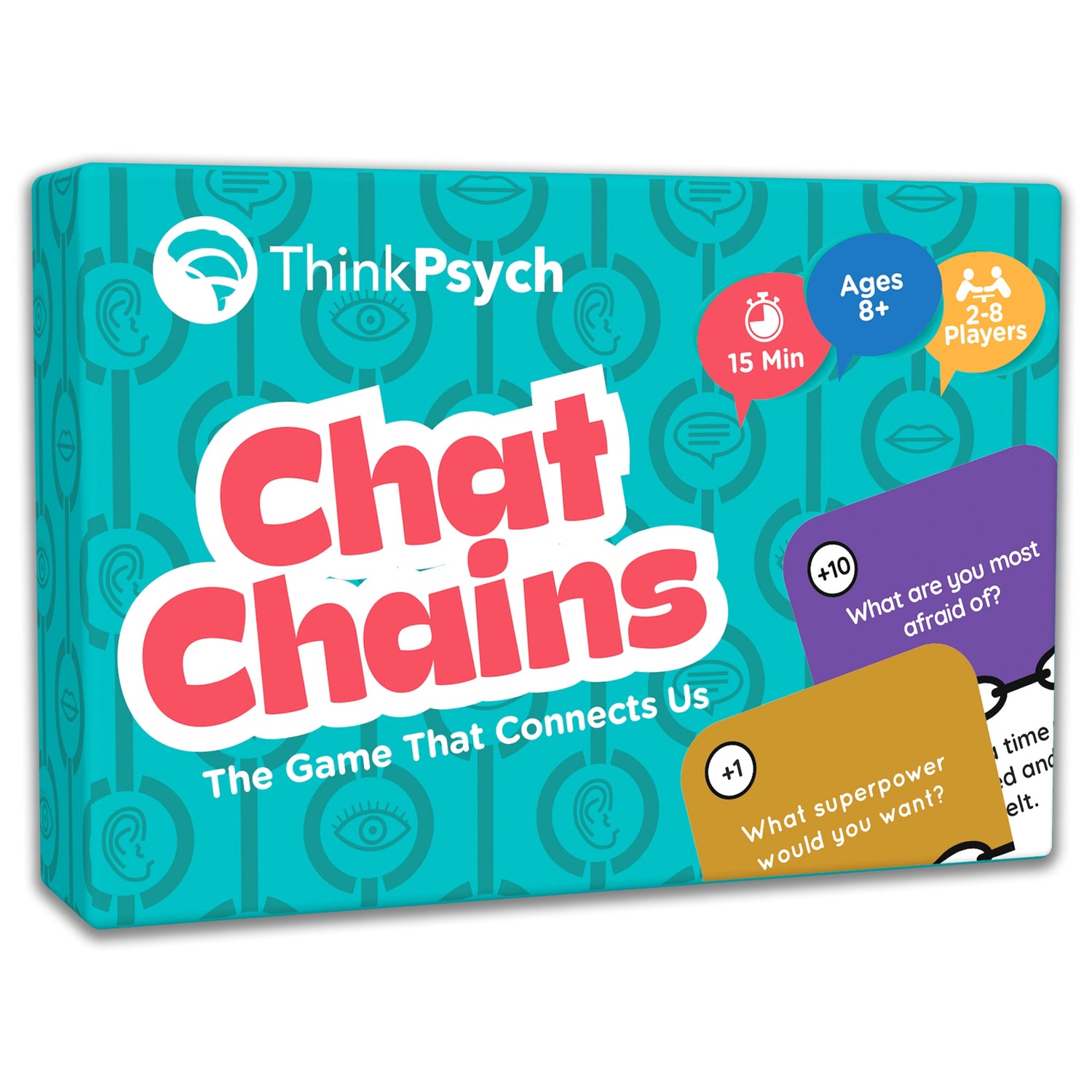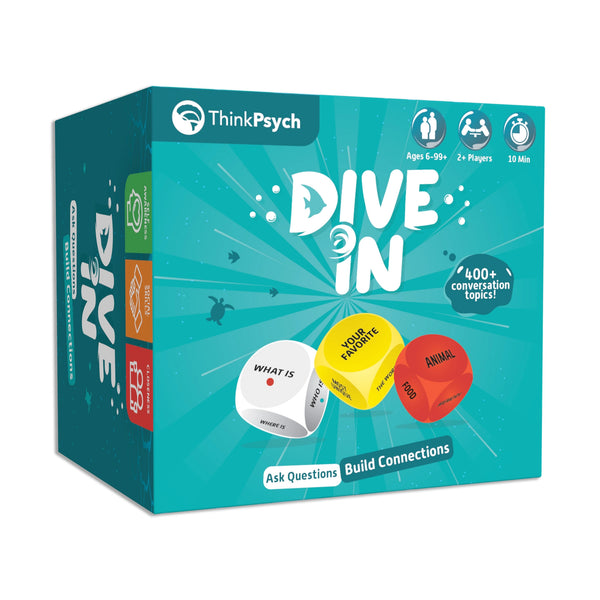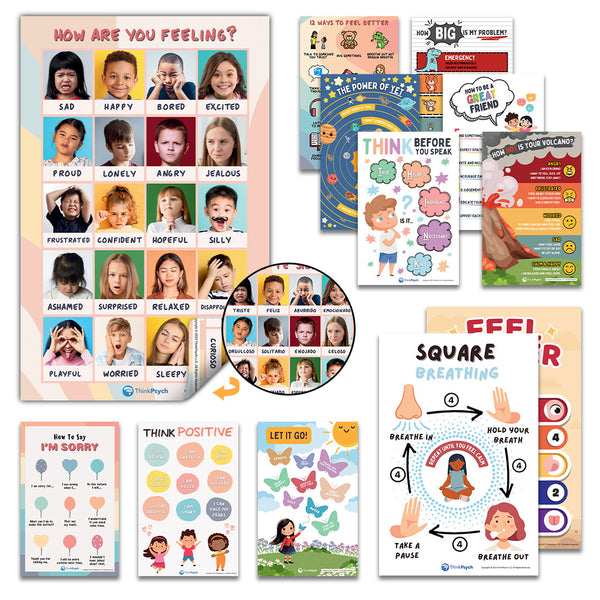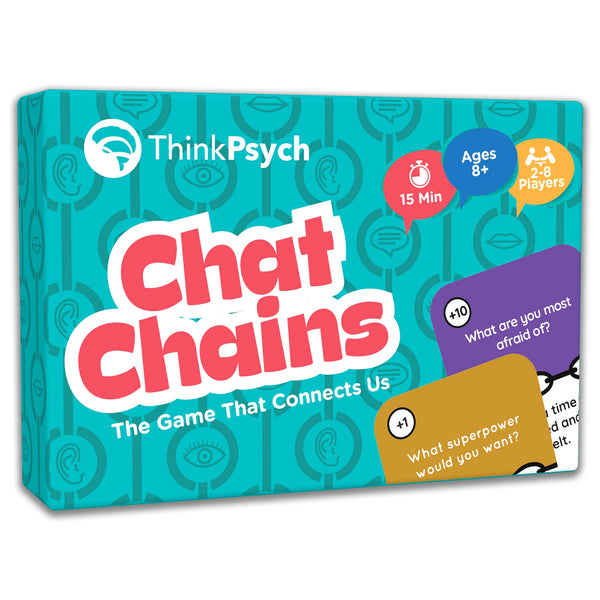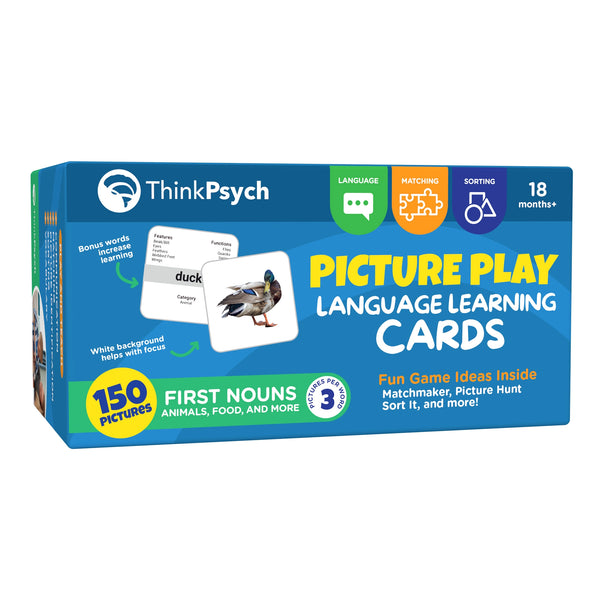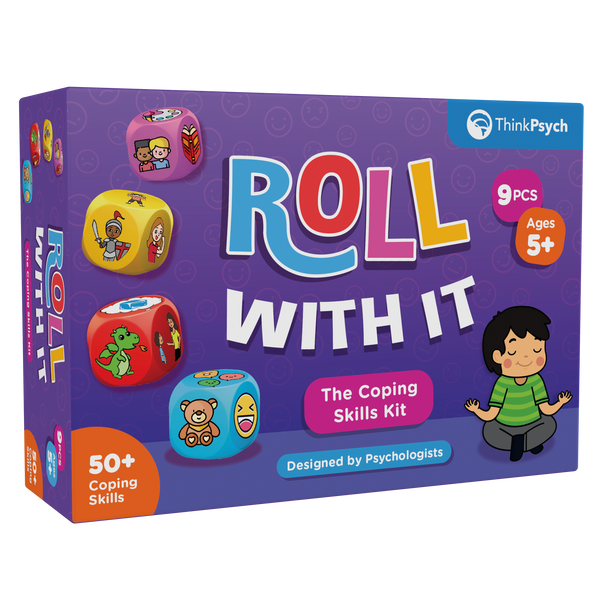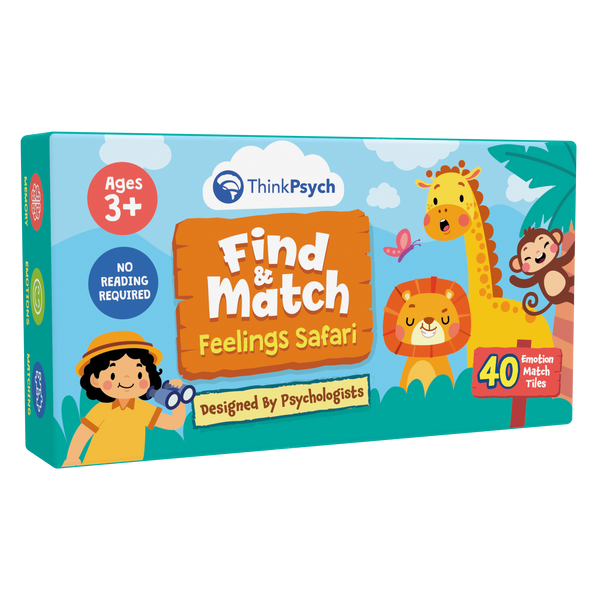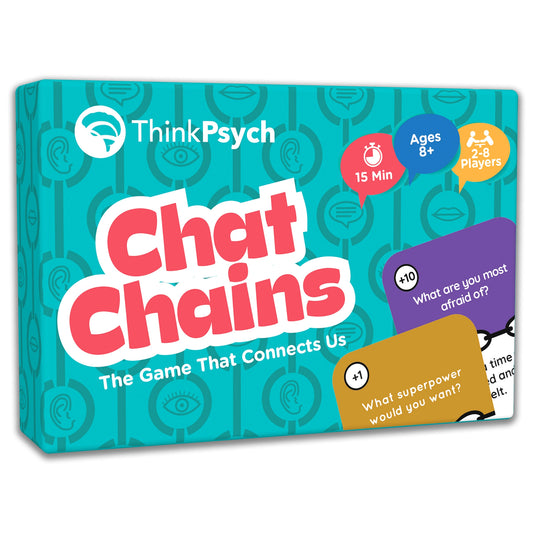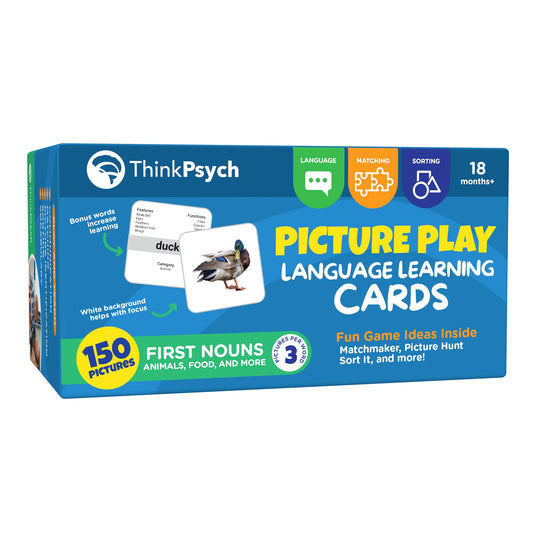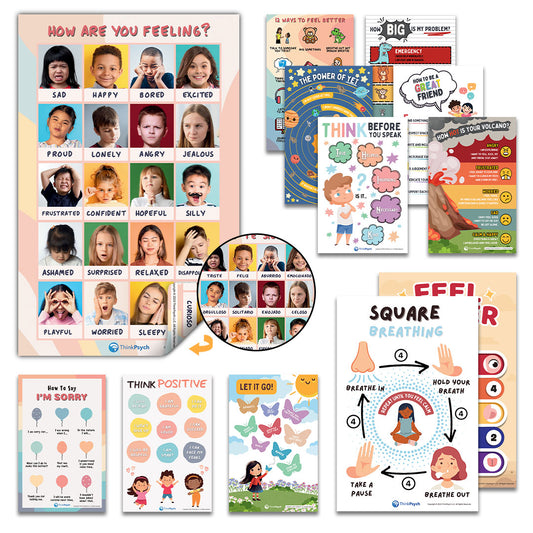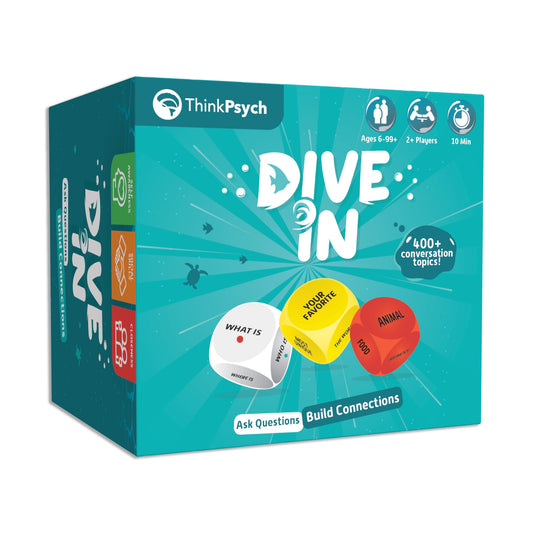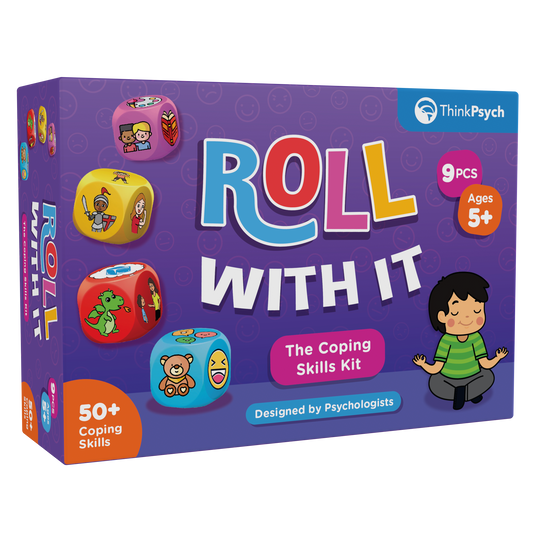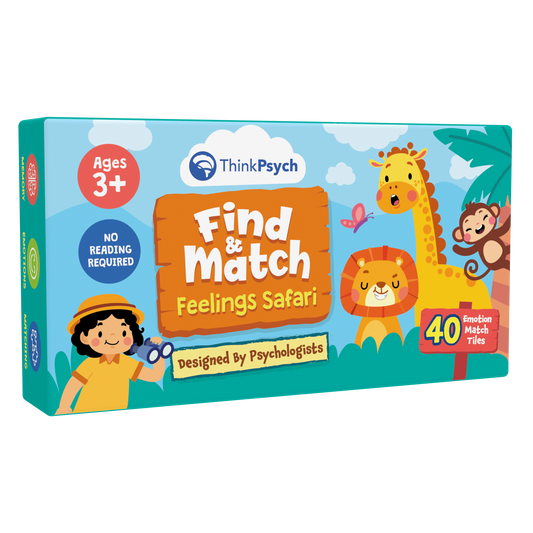
How to Cultivate Curiosity in Your Child’s Daily Life
Share
Curiosity is at the heart of how we learn, observe and explore our world. It also has superb benefits for your child, including stimulating creativity, problem-solving, open-mindedness and more.
But how can you cultivate curiosity in your child? Our experts at ThinkPsych have put together key habits that can revitalize your kid’s natural sense of curiosity. Incorporate these activities into your family’s routine to nurture a love of learning every day!
Expert-Backed Daily Habits to Cultivate Curiosity in Your Child
Kids are naturally curious, but you can draw out their instincts and talents by encouraging a sense of wonder in daily life. Doing so can improve their EQ and other skills, as well as lead them down new paths of exploration.
1. Wonder Aloud
The world is your playground. Every moment you share with your child is an opportunity to engage with what’s around you.
For example, a walk in the park can become a creative venture by pointing out and asking questions about what you see. You might wonder aloud about shadows: “Why are they different lengths?” or “Why do they get bigger/smaller during the day?” Or, you may come across a frog or squirrel, and wonder about their habits.
Anything that gets your child thinking, asking and interacting is great to stimulate their mind!
2. Encourage Your Child to Explore the 5 Senses and 5Ws
The five senses – seeing, smelling, hearing, tasting and touching – can enhance your child’s experiences. Activate your child’s sensory perception by encouraging them to observe beyond sight.
Offer them new experiences by frequently putting on music and introducing them to textured toys and new foods. Draw attention to these faculties by asking them to close their eyes and notice their surroundings by using other senses.
In addition, you can leverage the 5Ws (who, what, when, where and why) to help your child ask great questions and explore problems using different perspectives.
3. Teach Your Child How to Discover Answers
Avoid looking up or telling your kid the “correct answer” right away. Curiosity is all about letting your child think through the problem and come up with their own theories.
Model how to discover answers together. For example, show your child how to brainstorm possible ideas, ask more questions and consult trusted sources (whether a family member, book or app).
Don’t be afraid of silence, either. Give your child space to consider and organize their thinking first. This will help them become confident, independent learners down the road.
4. Remove the Fear of a Blank Page or Canvas
A blank page or canvas can be daunting for children (and even adults!). Give your kid space to explore and make mistakes without any pressure.
For example, you might show your kid examples of what they could build, draw or write. Find pictures online to kindle ideas. And make sure there are enough materials for “do-overs” and trying out different things.
You might even motivate your child to keep generating new ideas for later with a notebook, note app or inspiration board!
5. Lean Into Your Child’s Interests
Let your child take the lead on expressing their curiosity. Don’t try to force them to do specific activities or complete them in a certain way.
Educators often discuss curiosity as a “garden” where every child will find something different. Leave your kid to their own devices to explore and embrace what draws their interest. From this initial spark, you can help them deepen it over time.
6. Build a Daily Reading Habit
Reading is a wonderful avenue for children to imagine new worlds and explore unique perspectives. Research even suggests that reading fiction can help us develop stronger empathy and social cognition.
Create a daily reading habit so that your child gets exposed to the benefits of wonder. You might read a bedtime story together or set aside time for independent reading during the day. In this way, your child will get into the habit of turning to books to learn more and get inspired.
7. Practice Mindfulness With Your Child
Between school and extracurriculars, our kids lead busy lives. Mindfulness is an excellent technique to help your child clear their mind and enable new thinking patterns.
Shop ThinkPsych Products
Mindfulness is all about being aware of the moment and feeling calm within body and mind. To cultivate mindfulness in your child, teach them to slow down. Taking a walk, journaling or listening to music can all be ways to soothe your child and allow their minds to wander. You might even show them meditation exercises to control their breathing and find calm.
8. Learn or Experience Something New
Sometimes our kids get stuck in a rut. Getting out of the usual routine can help cultivate curiosity and creative expression.
Nudge your child out of their comfort zone by enabling new experiences. Perhaps your kid is interested in learning a musical instrument, new language or artistic craft. They may also want to participate in a local event or go on a field trip to a fair or museum. Inspire them with something new to spark their innovative side.
9. Don’t Mettle in Your Kid’s Projects
So often parents want to improve their kid’s projects, whether it’s a craft, play, science experiment or something else.
Shy away from making suggestions or constructive criticisms – unless of course your child asks for help or feedback. Overall, it’s best to let them work it out and find their own path. There’s no “one size fits all” in curiosity, so fostering their sense of independence and identity is vital here.
10. Say Yes to Boredom
Curiosity happens when your kid has the time to develop it. Research suggests that boredom is actually good for us, as it stimulates “creativity and problem-solving.”
When kids are bored, they also gravitate towards their interests and find new ways to play and create. Usually they come up with unique activities and ideas that they wouldn’t otherwise during their routine.
Next time your child says “I’m bored,” don’t try to solve it for them. Enable your kid to discover how to fill that time and discover new creativity.
11. Limit Low-Quality Screen Time
Screen time can also be part of cultivating curiosity – but only with the right content. These days, there are oodles of apps that are educational, allowing your kid to hone their artistic, scientific or academic interests.
To this end, don’t just set limits on screen time, but also screen quality. Green-light certain apps or activities that you think can nurture your child’s thinking. From here, you can help reduce non-educational screen time in your kid’s daily life.
12. Protect Your Child’s Free Time
If your kids are too busy and overscheduled with extracurriculars, they will find it difficult to stay interested and creative.
Give your child time to just play. Protect their time from the endless revolving door of planned activities and ensure they have blocks of free time to explore and enjoy their day on their own terms. Playdates with other kids can also be enriching for kids to collaborate and imagine together.
13. Include Your Child in Your Daily Activities
Your daily routine is filled with activities that may be interesting to your kids. Invite your child (but don’t force them) to join you during your own creative practices.
Be a good role model by including them while you garden, bake cookies, fix a broken appliance, make a gift for a friend, etc. These seemingly small tasks can be big opportunities to encourage your kid to problem-solve and apply their creativity.
14. Ensure Your Child Gets Enough Zs
To stay alert and curious, your child needs to get enough zs. Create a sleep routine that’s appropriate for their age and try to stick with it. Make sure they’re not using screens before bed either, as blue light can keep them up.
With a full night’s rest, your child will feel recharged and able to make new connections. Research suggests that kids who don’t sleep enough will struggle to focus and learn new information.
15. Encourage Mistakes and Failure
Curiosity is a never-ending process of trial and error. Foster a sense of learning in your child by focusing on a growth mindset.
A growth mindset means that it’s ok to fail or be bad at something because you always have the power to improve. Allow your child to flex their creative muscles and make mistakes that lead them down new paths of discovery.
Cultivate Curiosity in Your Child With ThinkPsych
Pique your child’s curiosity and foster creativity every day. With these habits above, you can help boost new ways of looking at the world and empower your kid to discover lifelong interests.
For some example projects to cultivate curiosity and creativity, check out our ultimate list here. We’ve got everything under the sun to captivate your child’s imagination. In addition, you can get plenty of other activities on our ThinkPsych blog, including multicultural activities, social skill activities and more!
References:
- The Genius of Play, Boost and Sustain Your Child’s Curiosity Through Play, https://thegeniusofplay.org
- Mayo Clinic, 8 Tips to Develop Children’s Curiosity, https://www.mayoclinichealthsystem.org
- Zero to Three, Tips on Nurturing Your Child’s Curiosity, https://www.zerotothree.org
- Haymarket Children’s Academy, How to Nurture Your Children’s Curiosity, https://haymarketca.com
- Planet Spark, Strategies to Enhance Critical and Creative Thinking Skills in Children, https://www.planetspark.in
- TED, 10 Tips for Cultivating Creativity in Your Kids, https://ideas.ted.com
- FreePik, Full Shot Smiley Kids Outdoors, https://www.freepik.com
